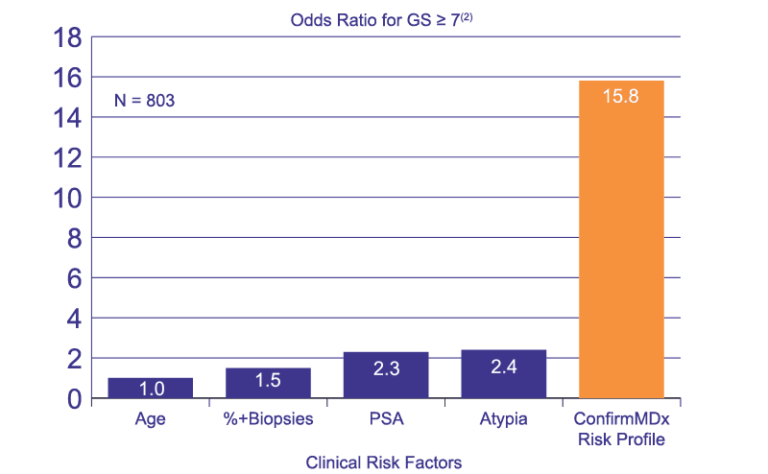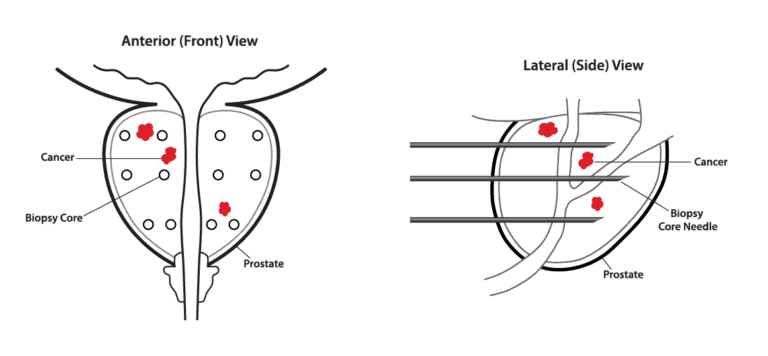ConfirmMDx: análisis epigenético
ConfirmMDx aborda el error de muestreo de la biopsia de próstata y el dilema de la biopsia falso-negativo
ConfirmMDx es un análisis epigenético que ayuda a distinguir a aquellos pacientes que poseen una biopsia verdaderamente negativa de aquellos que podrían estar ocultando el cáncer.
Biopsias Estándar: Limitaciones y Riesgos

ConfirmMDx: Evita Biopsias Innecesarias
La biopsia de próstata estándar solamente proporciona una evaluación limitada ya que realiza un muestreo de una parte de la próstata al momento de tomar las muestras que se envían a analizar. El cáncer de próstata puede estar presente en uno o más tumores pequeños, y existe el riesgo de que la aguja de la biopsia pueda haberlo omitido y asi surgen los resultados falso negativo.
Si se ha realizado una biopsia de próstata, con resultado negativo en los últimos 24 meses se pueden enviar las muestras restantes de tejido de la biopsia de próstata anterior para la prueba ConfirmMDx. No necesita repetir la biopsia.
La prueba ConfirmMDX para el cáncer de próstata aborda las preocupaciones de una biopsia con un falso negativo y ayuda al médico Urólogo a:
- DESCARTAR a los hombres que no padecen cáncer de próstata para que no se sometan a biopsias repetidas e innecesarias.
- INCLUIR a los hombres con alto riesgo que puedan necesitar realizarse nuevamente una biopsia y someterse a un posible tratamiento.
Importancia Clínica y Eficacia
Los estudios clínicos publicados de forma independiente han demostrado que para los hombres que han recibido un resultado negativo de la biopsia de próstata, el analisis epigénico ConfirmMDx es el predictor más significativo del resultado del paciente entre todos los factores clínicos actualmente disponibles, como la edad, el nivel de PSA y los resultados del tacto rectal.

Los hombres con un nivel de PSA elevado o en aumento (≥ 4.0 ng / ml) y / o un examen rectal digital (DRE) anormal se consideran de alto riesgo de cáncer y, a menudo, se les deriva a una biopsia de próstata para determinar si hay cáncer de próstata. El procedimiento estándar de biopsia de próstata toma de 10 a 12 muestras centrales, y la revisión histopatológica mediante inspección visual bajo un microscopio sigue siendo el estándar de oro para el diagnóstico de cáncer de próstata. Sin embargo, este esquema toma muestras de menos del 1% de la glándula prostática completa y da como resultado un análisis histopatológico limitado. El error de muestreo es un problema inherente y bien documentado, con tasas de falsos negativos de procedimientos de biopsia de próstata reportadas tan altas como 25-35%.

ConfirmMDx es una prueba epigenética bien validada que guía la detección del cáncer de próstata oculto en el tejido negativo previamente biopsiado de un paciente
